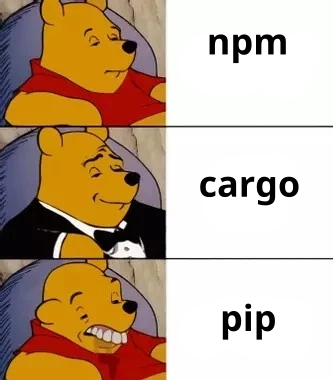this post was submitted on 13 Oct 2023
324 points (81.4% liked)
Programmer Humor
33090 readers
355 users here now
Post funny things about programming here! (Or just rant about your favourite programming language.)
Rules:
- Posts must be relevant to programming, programmers, or computer science.
- No NSFW content.
- Jokes must be in good taste. No hate speech, bigotry, etc.
founded 5 years ago
MODERATORS
you are viewing a single comment's thread
view the rest of the comments
view the rest of the comments

As I understand, when you update npm packages, if a package/version is specified in
package-lock.json, it will not get updated past that version. But running those pip commands you mentioned is only going to affect what version gets installed initially. From what I can tell, nothing about those commands is stopping pip from eventually updating a package past what you had specified in therequirements.txtthat you installed from.The behaviour you mention is from npm install, which will put the same exact version from the package-lock.json, if present. If not it will act as an npm update.
npm update will always update, and rewrite the package-lock.json file with the latest version available that complies with the restrictions defined on the package.json.
I may be wrong but, I think the difference may be that python only has the behaviour that package-lock.json offer, but not the package.json, which allows the developer to put constraints on which is the max/min version allowed to install.
If you want min-max behaviours you need to use wrappers like pipenv or jump into conda/mamba. Pip offers basic functionality because there are more advanced tools that the community uses for the more advanced use cases.
I don't follow. If my package-lock.json specifies package X v1.1 nothing stops me from manually telling npm to install package X v1.2, it will just update my package.json and package-lock.json afterwards
If a requirements.txt specifies X==1.1, pip will install v1.1, not 1.2 or a newer version. If I THEN install package Y that depends on X>1.1, the pip install output will say 1.1 is not compatible and that it is being upgraded to 1.2 to satisfy package Y's requirements. If package Y works fine on v1.1 and does not require the upgrade, it will leave package X at the version you had previously installed.